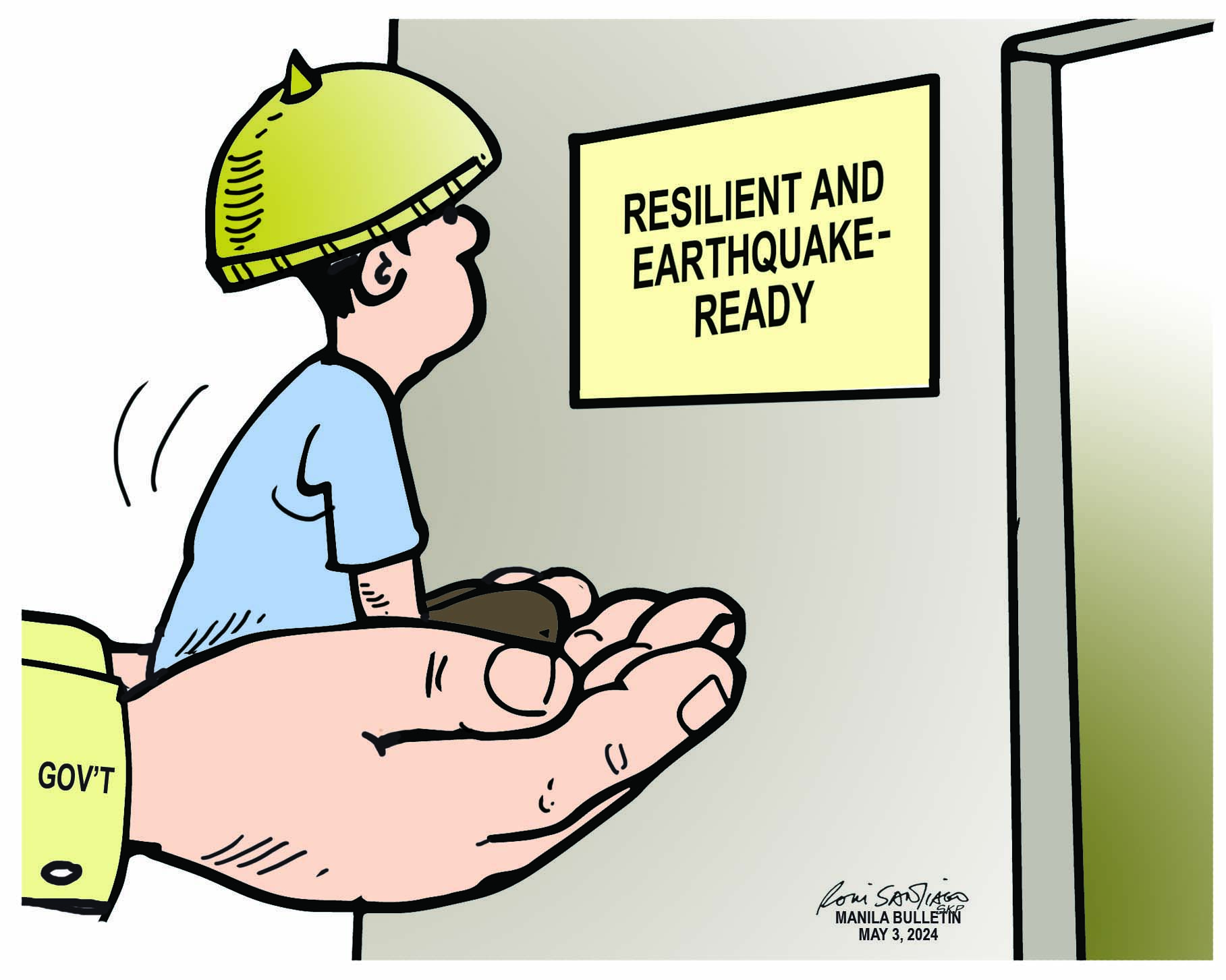
The Philippines is no stranger to seismic activity, no thanks for being nestled within the Pacific Ring of Fire. And with numerous fault lines criss-crossing the archipelago, the risk of a major earthquake looms large.
While the “duck, cover, and hold” drills have become a familiar routine, these alone are insufficient to ensure safety during a significant seismic event, especially the feared “Big One.” Therefore, it is crucial that we take additional measures to minimize the impact of strong quakes and protect lives and property.
In preparation for a major seismic event, it is important to take crucial steps to enhance earthquake preparedness.
We can begin with public awareness and education. The government should launch sustained awareness campaigns to educate citizens about earthquake risks, safety protocols, and evacuation procedures. These campaigns should target schools, workplaces, and communities. It would be of great help if earthquake preparedness is incorporated in the school curricula. Students should learn not only how to react during an earthquake but also how to prepare beforehand.
Another pivotal step is building resilience. Retrofitting of vulnerable structures to meet seismic standards is necessary. Many buildings, especially older ones, are not designed to withstand strong earthquakes.
Strict building code is another necessary measure. Stringent building codes that consider seismic risks must be enforced. New constructions should adhere to earthquake-resistant designs and materials. Evaluation and reinforcement of critical infrastructure such as bridges, hospitals, and schools should be at the core of these preparations. These structures play vital roles during emergencies.
Local governments should develop and regularly update their disaster risk reduction management plans that specifically address earthquake scenarios. These plans should involve local leaders, emergency responders, and residents.
Beyond the basic “duck, cover, and hold” drill, conduct realistic evacuation simulations. Test communication systems, evacuation routes, and coordination among agencies.
Another vital step is having community resilience centers. Establish safe community centers equipped with emergency supplies, medical kits, and communication facilities.
Investing in early warning systems is crucial. The Philippine Institute of Volcanology and Seismology (Phivolcs) must be strengthened by providing adequate resources for monitoring seismic activity. Early detection can save lives. There must be efficient systems to disseminate real-time alerts to the public via mobile apps, text messages, and sirens.
Another important step is individual preparedness. Households must be encouraged to prepare emergency kits containing essentials like food, water, first aid supplies, flashlights, and important documents. Families must be educated on securing heavy objects, anchoring furniture, and identifying safe spots within their homes. A sense of community must be fostered by encouraging neighbors to look out for one another during emergencies.
On the other hand, businesses and industries should develop long-term plans that account for earthquake scenarios. This includes safeguarding critical data, ensuring employee safety, and maintaining essential services.
While ducking, covering, and holding are valuable initial responses, a holistic approach to earthquake preparedness is essential. By investing in education, infrastructure, and early warning systems, we can minimize the impact of strong quakes and protect our people. Let us work together to build a resilient and earthquake-ready Philippines.